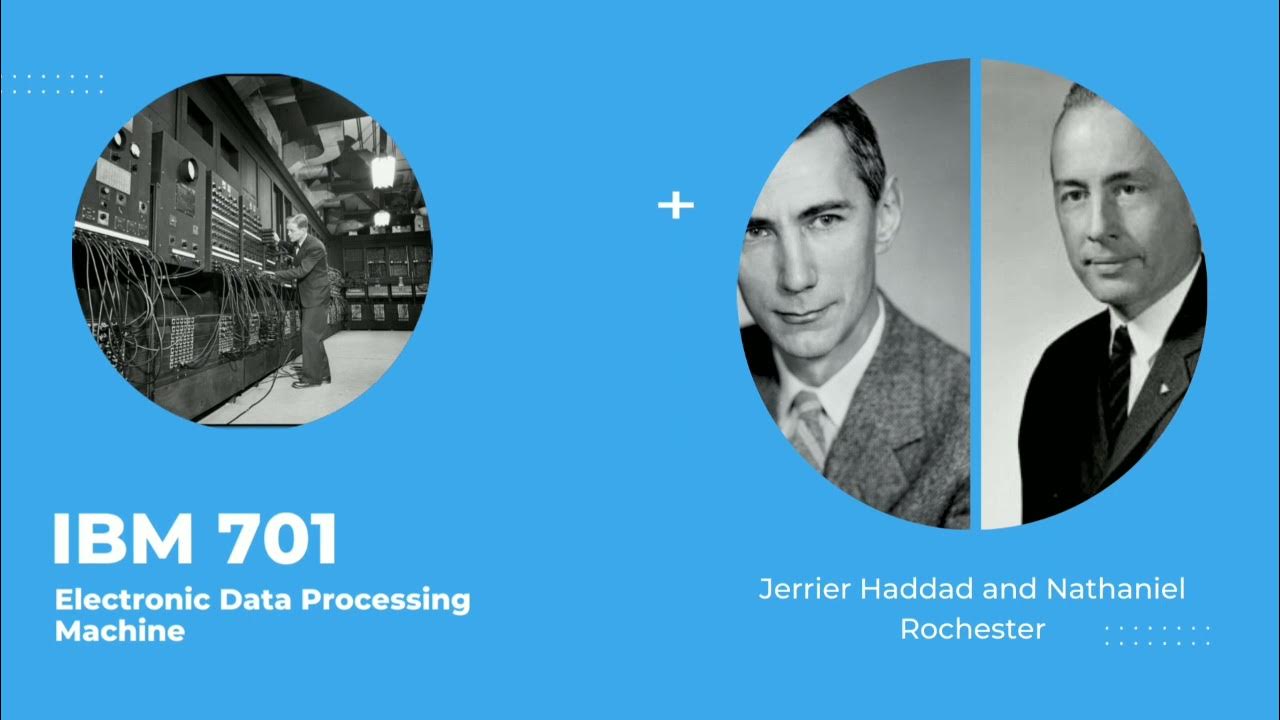Konsep Dasar Sistem Operasi
Summary
TLDRThis video explores the fundamental concepts of operating systems, starting with the evolution of computers and the development of early systems like batch processing. It covers various types of operating systems, including multiprogramming, time-sharing, multi-processing, real-time, and distributed systems. The video also discusses the advantages and challenges of each system, focusing on how they manage CPU resources, memory, and tasks. It provides insights into the workings of centralized and distributed systems, highlighting their differences and use cases, along with the benefits of enhanced processing speed and system reliability.
Takeaways
- 😀 The early stages of computer development did not include an operating system, as the first computers were used only for simple computations.
- 😀 Batch processing was the first form of system operation, involving grouping tasks together for more efficient CPU usage.
- 😀 The Resident Monitor system was an early attempt to automate job scheduling by switching between tasks without manual intervention.
- 😀 The concept of multiprogramming allowed for multiple tasks to run by using memory partitions, enabling jobs to be switched when one was waiting for I/O.
- 😀 Time-sharing systems, or multitasking, involve dividing CPU time into small units for each process to allow multiple tasks to be executed in parallel.
- 😀 A drawback of time-sharing systems is that if a task exceeds its time limit, it can be split into smaller tasks, causing inefficiencies in CPU usage.
- 😀 Multiprocessing systems use more than one CPU, either in a symmetric or asymmetric configuration, to process multiple tasks simultaneously.
- 😀 Distributed systems consist of multiple processors with their own memory, working together to handle tasks more efficiently by dividing computations among processors.
- 😀 Real-time systems are designed to meet strict timing constraints, with hard real-time systems guaranteeing time-sensitive tasks and soft real-time systems prioritizing critical tasks over others.
- 😀 Centralized and distributed operating systems handle resources and data differently: centralized systems use a master processor with shared memory, while distributed systems allow each processor to have its own memory and manage tasks independently.
Q & A
What is the main focus of the video script?
-The main focus of the video is to discuss the basic concepts of operating systems, including their evolution and the different types of operating systems such as batch systems, multiprogramming, time-sharing, multiprocessing, real-time, and distributed systems.
What was the state of computing before the development of operating systems?
-Before the development of operating systems, computers were primarily used for basic computation tasks, and there were no operating systems to manage the resources and tasks.
What is a batch system in the context of early computing?
-A batch system is an early operating system concept that involves grouping jobs together and executing them sequentially. The goal was to maximize CPU usage by reducing idle time, although it was initially inefficient.
How did the resident monitor function in early batch systems?
-In early batch systems, the resident monitor was a small program that resided in memory and automatically managed job scheduling, transferring control between processes without human intervention.
What is multiprogramming, and how does it work?
-Multiprogramming is a system where multiple jobs are executed by placing them in memory. If one job is waiting for I/O, the CPU can switch to another job, allowing more efficient use of the CPU.
What are the advantages and disadvantages of time-sharing systems?
-The advantage of time-sharing systems is that they allow multiple processes to share the CPU, improving efficiency. However, if a process exceeds its allocated time, it may cause excessive switching, which can reduce performance.
What is the difference between symmetric and asymmetric multiprocessing?
-In symmetric multiprocessing, all processors share equal control over the system, each executing the same operating system. In asymmetric multiprocessing, one processor (master) controls the others (slaves), which only execute tasks assigned by the master.
What is a distributed system, and what are its advantages?
-A distributed system consists of multiple processors, each with its own memory, working together on tasks. Its advantages include better reliability, fault tolerance, and the ability to divide computational tasks for faster execution.
What is the role of real-time systems, and how do they differ from regular systems?
-Real-time systems are used for applications that require precise timing, such as in control systems. They differ from regular systems by ensuring that critical tasks are completed within strict time constraints. Real-time systems can be hard or soft, with hard real-time systems requiring guaranteed task completion within a time limit.
What is the key distinction between centralized and distributed operating systems?
-In a centralized operating system, one master processor controls all resources and tasks. In a distributed system, multiple processors with their own memory share tasks and resources, providing better scalability and fault tolerance.
Outlines

This section is available to paid users only. Please upgrade to access this part.
Upgrade NowMindmap

This section is available to paid users only. Please upgrade to access this part.
Upgrade NowKeywords

This section is available to paid users only. Please upgrade to access this part.
Upgrade NowHighlights

This section is available to paid users only. Please upgrade to access this part.
Upgrade NowTranscripts

This section is available to paid users only. Please upgrade to access this part.
Upgrade NowBrowse More Related Video

Operating Systems: Crash Course Computer Science #18

SEJARAH SINGKAT SISTEM OPERASI (OPERATING SYSTEM) KOMPUTER DARI GENERASI AWAL HINGGA KINI

Materi Pertemuan 2 PTI PJJ PAI

#1 Sistem Komputer Kelas 8-Informatika Kumer (Komponen SK, Pengalamatan Memory dengan Heksadesimal)

Evolution of Operating System (OS)

Historia y evolución de la computadora
5.0 / 5 (0 votes)